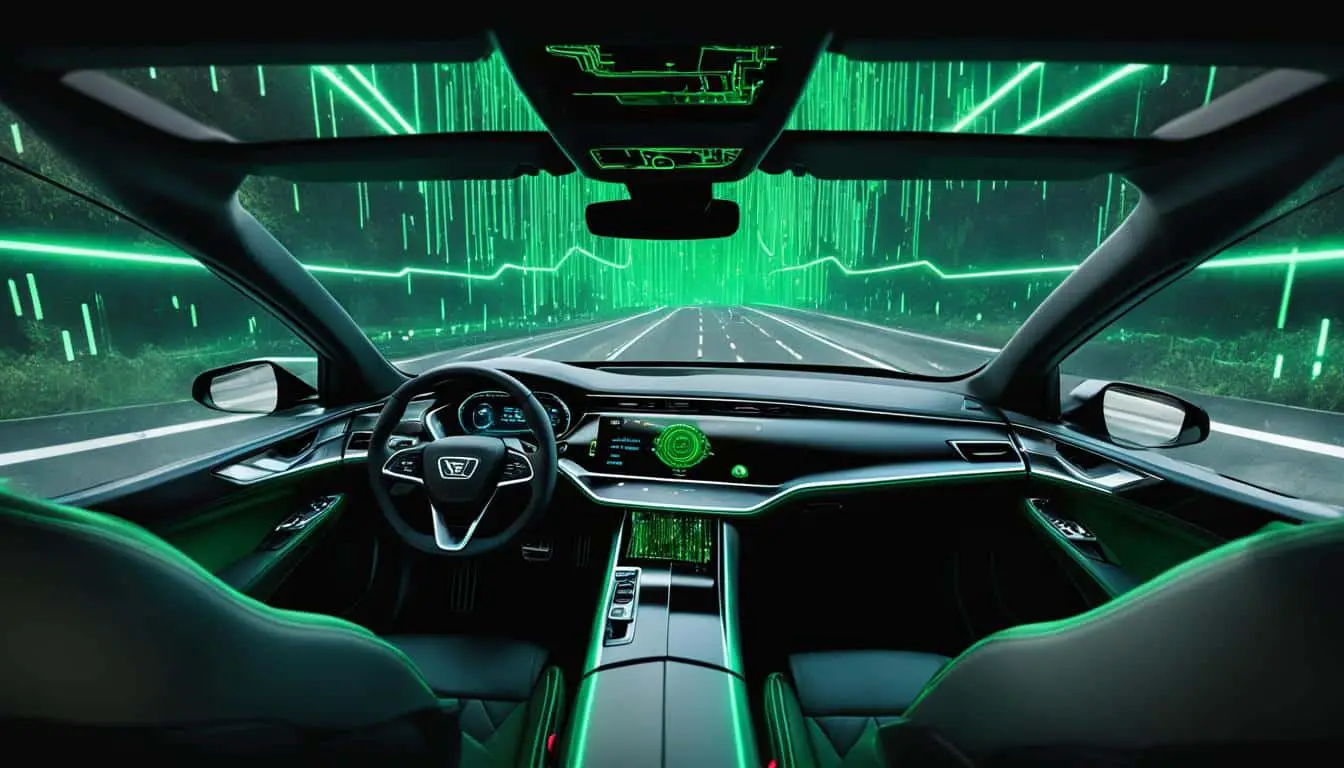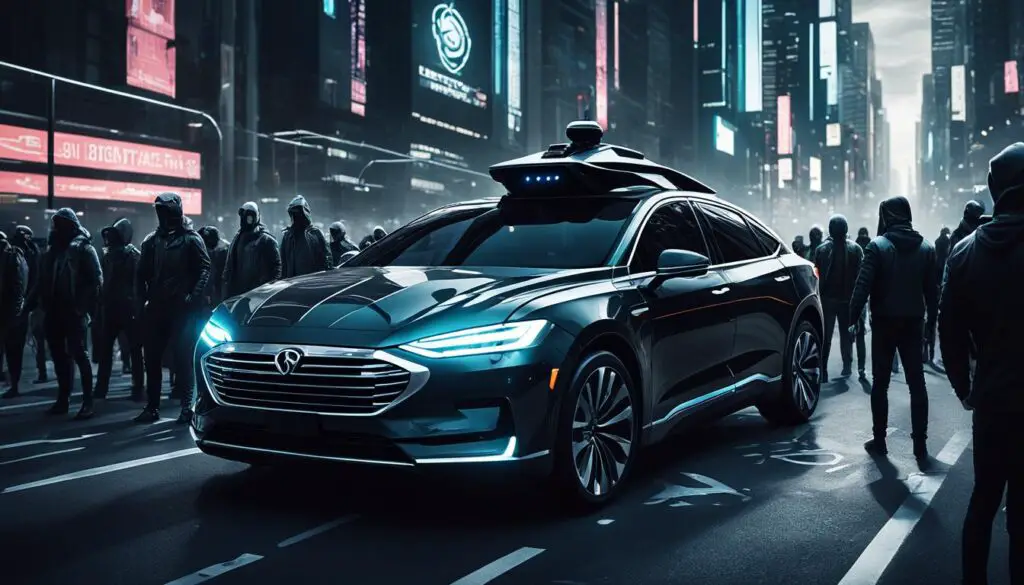
Cybersecurity in the Age of Self-Driving Cars
As technology continues to advance, self-driving cars have emerged as a revolutionary development in the transportation industry. These autonomous vehicles rely on a complex network of sensors, software, and algorithms to navigate roads and provide a safe and efficient transportation experience. However, with the rise of self-driving cars comes the pressing need to address cybersecurity vulnerabilities that put the safety and security of passengers at risk.
Cybersecurity in the context of self-driving cars refers to the protection of these vehicles and their systems from potential cyber threats. The increasing connectivity of autonomous vehicles makes them vulnerable to attacks from malicious actors who seek to exploit weaknesses in the vehicle’s software or network infrastructure. Such attacks can have catastrophic consequences, ranging from compromise of passenger safety to disruptions in the daily lives of individuals.
Key Takeaways:
- Cybersecurity is a critical concern in the development and implementation of self-driving cars.
- Autonomous vehicles are vulnerable to various types of cyber threats, including remote control manipulation and malware infections.
- Protecting self-driving cars from cyber attacks is crucial to ensure passenger safety and prevent disruptions in daily life.
- Research and industry efforts are focused on identifying vulnerabilities and developing defense mechanisms to enhance cybersecurity in autonomous vehicles.
- Public awareness and education about the importance of cybersecurity in the context of self-driving cars are essential.
Understanding Autonomous Vehicles and Their Vulnerabilities
Autonomous vehicles, also known as self-driving cars, revolutionize transportation with their reliance on advanced technologies. Through a combination of sensors, software, and machine learning algorithms, these vehicles navigate roads and make crucial decisions without human intervention. However, as with any technology, autonomous vehicles are vulnerable to various cyber threats that pose significant risks to their safety and security.
Attackers can exploit vulnerabilities in autonomous vehicles through a range of techniques, including remote control manipulation, communication interference, malware infections, and physical attacks on the vehicle’s hardware. Such attacks can have severe consequences, potentially resulting in the loss of control, manipulation of data, or theft of personal information. Protecting these vehicles against cyber threats is vital to ensuring the well-being of passengers and the public at large.
In an increasingly connected world, the importance of cybersecurity in autonomous vehicles cannot be overstated. As the prevalence of self-driving cars grows, so too does the need for robust defense mechanisms that safeguard against cyber threats.
Developing effective solutions to these vulnerabilities requires a comprehensive understanding of the risks involved. By examining the different attack vectors and vulnerabilities, researchers and industry professionals can work towards implementing robust cybersecurity measures that address these concerns.
Types of Vulnerabilities
To illustrate the various vulnerabilities that exist in autonomous vehicles, consider the following:
| Vulnerability Type | Description |
|---|---|
| Remote Control Manipulation | Attackers can gain unauthorized access to the vehicle’s systems, allowing them to manipulate its operations remotely. |
| Communication Interference | Malicious actors can disrupt the communication channels between the vehicle and external systems, leading to potential control disruptions. |
| Malware Infections | Autonomous vehicles may become compromised through the introduction of malware, which can enable unauthorized control or access. |
| Physical Attacks | Attackers can physically tamper with the vehicle’s hardware, compromising its functionality and potentially causing harm to passengers. |
Understanding these vulnerabilities enables the development of effective countermeasures and protective measures to mitigate the risks associated with cyber threats in autonomous vehicles.
The Pros and Cons of Autonomous Vehicles in Terms of Cybersecurity
Autonomous vehicles offer numerous benefits in terms of road safety, traffic flow, efficiency, and environmental impact. Their ability to navigate without human intervention has the potential to revolutionize transportation systems. However, these vehicles also pose significant challenges in terms of cybersecurity.
One of the main concerns is the potential for cyberattacks to compromise the systems and control of autonomous vehicles, leading to dangerous situations on the road. Cybersecurity vulnerabilities in the vehicle’s software, communication networks, and sensors can be exploited by malicious actors, putting the safety of passengers and other road users at risk.
Moreover, the widespread adoption of autonomous vehicles may result in job losses for certain professions, such as truck drivers and taxi drivers. While this technological advancement offers convenience and efficiency, it raises ethical dilemmas when it comes to programming vehicles to make life-or-death decisions in critical situations. The question of how autonomous vehicles should prioritize the safety of different individuals in an unavoidable accident remains unresolved.
Additionally, relying too heavily on technology leaves individuals vulnerable if the systems fail or are hacked. Autonomous vehicles heavily rely on connectivity and an extensive network of sensors and software. Any disruption or compromise in these systems can have severe consequences, including loss of control and potential accidents.
“The convenience and efficiency of autonomous vehicles should not overshadow the importance of cybersecurity. Ensuring the safety and security of these vehicles should be a top priority for manufacturers, governments, and the technology industry.”
Therefore, it is crucial to carefully consider the pros and cons of autonomous vehicles in terms of cybersecurity. While the benefits are undeniable, it is equally important to address and mitigate the cybersecurity risks inherent in this technology. Through the collaboration of cybersecurity experts, automotive manufacturers, and policymakers, robust defense mechanisms can be developed to protect autonomous vehicles from cyber threats and ensure the safety and security of all road users.

The Pros and Cons of Autonomous Vehicles
| Pros | Cons |
|---|---|
| Improved road safety | Potential for cyberattacks compromising systems |
| Enhanced traffic flow | Potential job losses |
| Increased efficiency | Ethical dilemmas in programming decisions |
| Environmental benefits | Vulnerability to system failures and hacks |
Enhancing Cybersecurity in Autonomous Vehicles through Human Factor Research
The cybersecurity of autonomous vehicles is not solely dependent on technology but is also influenced by the human factor. Understanding human behavior, decision-making processes, and vulnerabilities is crucial in developing effective defense strategies. Researchers are actively investigating various aspects of human behavior in relation to cybersecurity in autonomous vehicles.
One focus of research is to identify characteristics of individuals prone to cybersecurity failures. By understanding the factors that contribute to vulnerability, measures can be implemented to mitigate risks and enhance overall cybersecurity. Additionally, studying real-life scenarios where cybersecurity failures occur can provide valuable insights into potential weaknesses and help design appropriate countermeasures.
“Understanding the human factor is essential in fortifying the cybersecurity of autonomous vehicles. By assessing human behavior patterns, we can create tailored educational materials for users to raise cybersecurity awareness and reduce potential vulnerabilities.” – James Smith, Cybersecurity Researcher
Another important area of study is the impact of multitasking on cybersecurity in autonomous vehicles. As humans juggle multiple tasks while operating these vehicles, it is essential to evaluate the effect of divided attention on cybersecurity. Findings from this research can inform policies and guidelines for multitasking, ensuring that users can maintain a high level of cybersecurity while performing other tasks.
The skills required for personnel working in autonomous vehicle cybersecurity are also a key focus. Identifying the necessary technical and analytical abilities, as well as understanding potential defectors and their motivations, can help shape recruitment strategies and training programs in this rapidly evolving field.
Exploring the psychological profiles of cyber attackers is another avenue of research. By gaining insights into their motivations, researchers can develop policies and strategies to mitigate cyber threats. Understanding the driving skills of autonomous vehicle users and their correlation with cybersecurity skills is also worth investigating. This knowledge can help tailor training programs to ensure that users possess the necessary cybersecurity competencies.
Key Points:
- Research on the human factor in cybersecurity for autonomous vehicles is essential for developing effective defense strategies.
- Identifying characteristics of individuals prone to cybersecurity failures can help mitigate risks and enhance overall cybersecurity.
- The impact of multitasking on cybersecurity in autonomous vehicles must be evaluated to establish appropriate policies.
- Understanding the skills required for personnel in autonomous vehicle cybersecurity can inform recruitment and training strategies.
- Investigating the psychological profiles of cyber attackers can assist in developing policies to mitigate their motivation.
- Exploring the connection between driving skills and cybersecurity skills in autonomous vehicle users is worthwhile.

By focusing on the human factor in cybersecurity research, we can strengthen the defenses of autonomous vehicles and ensure a safer and more secure future for this innovative technology.
Conclusion
In conclusion, cybersecurity is an essential consideration in the development and implementation of autonomous vehicles. While self-driving cars offer significant benefits, they also introduce vulnerabilities that can be exploited by cyber attackers. The industry is actively working to identify and address these vulnerabilities, develop robust defense mechanisms, and increase awareness about cybersecurity in the context of autonomous vehicles.
As technology continues to advance, it is crucial to prioritize cybersecurity measures to ensure the safety, security, and trustworthiness of self-driving cars in the future. By leveraging research and collaboration between researchers, industry professionals, and government agencies, we can enhance the resilience of autonomous vehicles against cyber threats.
With continuous innovation and the implementation of best practices, we can mitigate the risks associated with cybersecurity in self-driving cars. It is essential to build a strong foundation of cyber defense mechanisms that include robust network security, encryption, authentication protocols, and real-time monitoring systems. By doing so, we can instill public confidence and ensure the widespread adoption of self-driving cars to revolutionize our transportation systems while prioritizing our safety and privacy.
FAQ
What are autonomous vehicles?
Autonomous vehicles, also known as self-driving cars, are vehicles that utilize advanced technologies such as sensors, software, and machine learning algorithms to navigate roads and make decisions without human intervention.
Why is cybersecurity important for autonomous vehicles?
Cybersecurity is important for autonomous vehicles because these vehicles are vulnerable to various types of cyber-attacks, which can lead to dangerous situations such as loss of control, manipulation of data, or theft of personal information.
What are the potential vulnerabilities of autonomous vehicles?
Autonomous vehicles are vulnerable to cyber threats such as remote control manipulation, communication interference, malware infections, and physical attacks on the vehicle’s hardware.
What are the benefits of autonomous vehicles?
Autonomous vehicles offer benefits such as improved road safety, enhanced traffic flow, increased efficiency, and environmental benefits.
What are the challenges in terms of cybersecurity for autonomous vehicles?
The challenges in terms of cybersecurity for autonomous vehicles include the potential for cyberattacks to compromise the vehicle’s systems and control, ethical dilemmas in programming life-or-death decisions, and the risk of job losses for certain professions.
How does the human factor play a role in cybersecurity for autonomous vehicles?
The human factor plays a significant role in cybersecurity for autonomous vehicles, as understanding human behavior, decision-making processes, and vulnerabilities can contribute to the development of effective defense strategies.
What is being done to enhance cybersecurity in autonomous vehicles?
Researchers and industry professionals are actively working to identify and address vulnerabilities, develop defense mechanisms, and raise awareness about cybersecurity in the context of autonomous vehicles.
